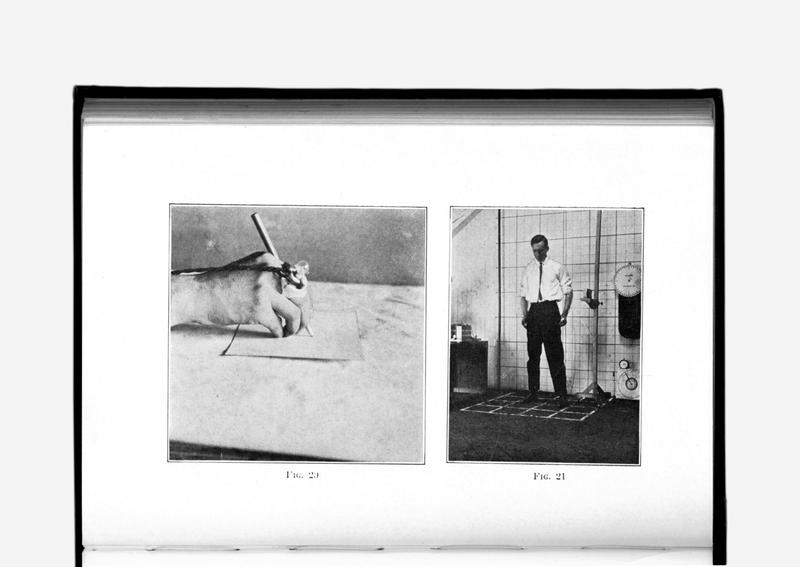Standardisation as an art of living
Frank Bunker Gilbreth is the Taylor of photography. His visual experimentation, conducted in the field of fatigue and motion studies, are notable examples of a vision of the world that is as innovative as it is reductive, and which is divided into an extreme rationalisation of all living processes. His works are a programme for the implementation of the Taylorism of the 1910s and 1920s. Gilbreth’s practical and theoretical studies are in fact attempts to devise an art of living suitable for the era of industrialisation, based on a division of movements, and which, while based on a low number of units, claim to have broad interpretative diversity. Gilbreth saw himself as the creator of a new model for individuals in a new society and did so by way of basic research into what he called “The one best way”: the most economical design possible for all kinds of labour processes. According to his projections, the world could be transformed simply by rationalising everyday life. This article reconstitutes his theories.

Page tirée de Frank Bunker Gilbreth et Lillian Moller Gilbreth, Fatigue Study. The Elimination of Humanity’s Greatest Unnecessary Waste. A First Step in Motion Study, Londres, George Routledge and Sons, 1919, n. p.
Born in 1964, Bernd Stiegler is a professor of modern German literature, with a particular focus on the 20th century and relationships between media. He works on photography history and theory, as well as on French and German literature of the 19th and 20th centuries. He recently published Autour de ma chambre. Petite histoire du voyage immobile, Laurent Cassagnau (trad.) (Hermann, 2016); Images de la photographie. Un album de métaphores photographiques, Laurent Cassagnau (trans.), Georges Didi-Huberman (pref.) (Hermann, 2015); Belichtete Augen. Optogramme oder das Versprechen der Retina (S. Fischer, 2011); Spuren, Elfen und andere Erscheinungen. Conan Doyle und die Photographie (S. Fischer, 2014); Photographische Portraits (Fink, 2015); and Der montierte Mensch. Eine Figur der Moderne (Fink, 2016).
Keywords: Taylorism, snapshot photography, rationalisation, study of movement, psychophysical, governmentality
Citation: Bernd Stiegler, « Frank Bunker Gilbreth. La normalisation comme art de vivre », Transbordeur. Photographie histoire société, no. 1, 2017, pp. 150-165.